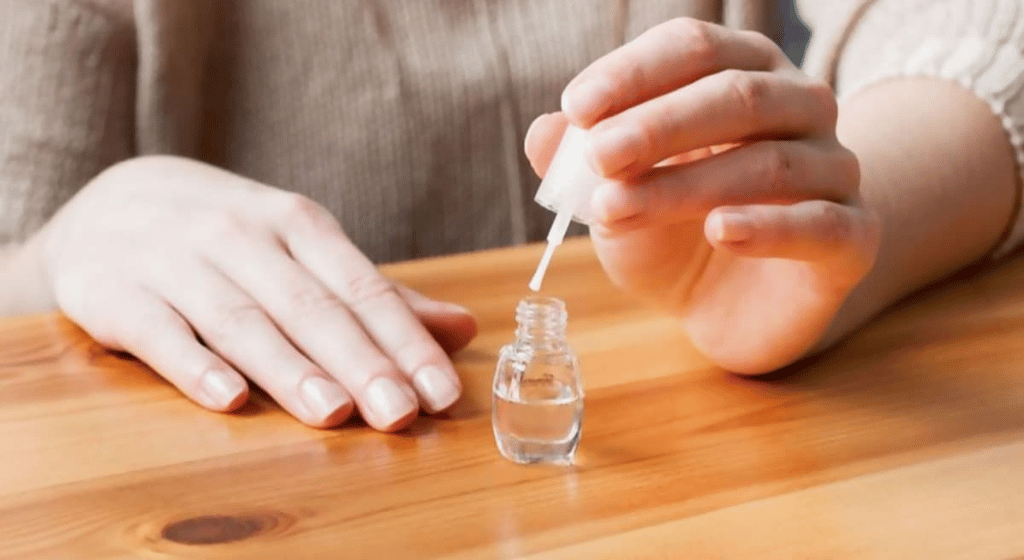How To Use Hydrogen Peroxide For Nail Fungus – A Step-By-Step Guide
Understanding How Oxidative Therapy Can Improve Nail Health
Nail fungus can be challenging to manage. It often starts as a yellow spot but can spread, leading to cracked nails, tenderness, and pain. Many experts suggest using hydrogen peroxide as a home remedy to combat nail fungus. This method is based on oxidative therapy, which may help prevent fungal growth and protect the nail bed from further damage. While this treatment is widely used, its effectiveness is still debated. This article explores how to use hydrogen peroxide for nail fungus, its safety, application methods, and possible side effects.
What Causes Nail Fungus?
Nail fungus (onychomycosis) occurs due to fungal infections that affect both toenails and fingernails. The main causes include:
- Fungal Organisms: Dermatophytes, yeasts, and molds thrive in warm, moist environments like sweaty shoes.
- Trauma or Injury: Nail injuries can provide an entry point for infection.
- Poor Nail Hygiene: Lack of proper cleaning, trimming, and drying creates conditions favorable for fungal growth.
- Warm, Humid Climates: High humidity increases susceptibility to nail fungus.
- Weakened Immunity: A compromised immune system due to medical conditions or medications raises the risk.
- Aging: Older adults experience diminished blood circulation, increasing susceptibility.
- Public Spaces: Walking barefoot in areas like swimming pools exposes individuals to fungal spores.
Is hydrogen peroxide effective for nail fungus?
Hydrogen peroxide is commonly used to disinfect minor wounds. Some people use it for toenail fungus due to its antifungal and oxidizing properties.
When applied to infected nails, hydrogen peroxide kills fungi, allowing the damaged nail to grow out. It has been used as an antiseptic, disinfectant, and bleaching agent, but its effectiveness against nail fungus is still debated. Some believe it works due to its antifungal properties, though scientific research is limited. The treatment may take weeks to months, depending on the severity of the infection. Continued use is recommended after the nail heals to prevent reinfection. Consulting a healthcare provider before use is advisable.
How To Use Hydrogen Peroxide To Treat Nail Fungus
Note: The following methods are for informational purposes only and should not replace medical advice. Consult a professional if you have concerns about your nail health.
1. Hydrogen Peroxide Foot Soak
You Will Need:
- 3% hydrogen peroxide
- Distilled water
- Plastic tub
- Tissues
Time: 30 minutes
Method:
- Mix equal parts hydrogen peroxide and distilled water in the plastic tub.
- Ensure the solution is no stronger than 3% to prevent skin irritation.
- Soak the affected nails for 30 minutes.
- Dry thoroughly with a tissue and dispose of it immediately.
- Allow nails to air dry completely before covering them.
Frequency: Repeat daily until symptoms improve. Patience and consistency are key.
Why This Works: Hydrogen peroxide is a powerful oxidizing agent. Anecdotal evidence suggests oxidative therapy using hydrogen peroxide may help destroy fungus. However, scientific validation is lacking.
2. Vinegar and Hydrogen Peroxide Soak
You Will Need:
- 3% hydrogen peroxide
- White vinegar or apple cider vinegar
- Distilled water
- Plastic tub
- Tissues
Time: 30 minutes (alternating days)
Method:
- Mix equal parts hydrogen peroxide and distilled water in the tub.
- Soak affected nails for 30 minutes.
- On the next day, mix equal parts vinegar and distilled water and repeat the process.
- Continue alternating between hydrogen peroxide and vinegar each day.
- Dry nails thoroughly after each soak.
Why This Works: Vinegar has antimicrobial and antifungal properties. It creates an acidic environment that hinders fungal growth.
3. Baking Soda and Hydrogen Peroxide Soak
You Will Need:
- ½ cup baking soda
- 1 cup 3% hydrogen peroxide
- ¼ cup white vinegar
- 4 cups warm water
- ½ cup Epsom salt
- Plastic tub
- Tissues
Time: 10 minutes
Method:
- Mix baking soda, peroxide, vinegar, Epsom salt, and warm water in the tub.
- Ensure the hydrogen peroxide is no stronger than 3%.
- Soak affected nails for 10 minutes.
- Dry nails thoroughly with a tissue.
Why This Works: Baking soda has antifungal properties that may help prevent fungal growth. When combined with hydrogen peroxide, it may help balance skin pH and eliminate fungus.
Additional Tips for Treating and Preventing Nail Fungus
- Wash and disinfect shoes and socks regularly.
- Disinfect nail clippers with hot water and alcohol.
- Keep nails short and clean.
- Thoroughly dry feet and hands after washing.
- Use antifungal sprays inside gloves and shoes.
- Wear moisture-absorbing socks to prevent fungal growth.
Side Effects of Hydrogen Peroxide for Nail Fungus Treatment
Hydrogen peroxide may cause:
- Skin irritation, redness, and itching.
- Dry skin or cracked feet.
- Peeling or burns in high concentrations.
- Eye irritation if it comes into contact with the eyes.
Alternatives to Hydrogen Peroxide for Nail Fungus
1. Tea Tree Oil: Contains antifungal properties and can be applied with a carrier oil like coconut oil.
2. Oregano Oil: Exhibits strong antifungal effects and may help combat infections.
3. Aloe Vera: Has antifungal and wound-healing properties. Apply directly to the affected area.
When To See a Doctor
Consult a doctor if:
- The infection worsens or spreads.
- The nail shows no improvement after weeks of treatment.
- You experience pain or significant discomfort.
- You have diabetes or a weakened immune system, as fungal infections can lead to complications.
Conclusion
Hydrogen peroxide is a widely used home remedy for nail fungus, but its effectiveness is still debated. It acts as an antiseptic and antifungal treatment, helping contain infections when used consistently. Soaking nails daily in diluted hydrogen peroxide may yield results in a few weeks. However, if symptoms persist, consult a healthcare provider for alternative treatments.



